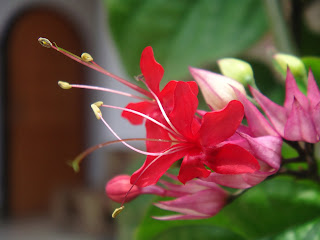
Elizabeth Urbach. Black tea.
Some people describe black tea as being “fermented”, but that is an inaccurate way of describing the process; fermentation involves the interaction of yeasts and molds with sugars and water to create alcohol, and that is not what happens with black tea when traditionally processed. Pu-erh tea and Kombucha, which is a tea-based, mildly alcoholic, beverage, do experience fermentation to a certain degree, and they will be discussed in future articles, but black tea is the product of fresh tea leaves and oxygen, not yeast.
Depending on the place where the tea was grown, the time of year it was harvested, and other factors, the flavor, fragrance and appearance of the leaves and liquor – or liquid infusion – of black tea will fall within an established range of characteristics; the tea’s place within that range help the professional tea tasters determine which teas are of superior quality, which are good or standard quality, and which have been ruined by improper processing or storage, and are unfit for sale. They use a specific vocabulary to describe the tea, terminology which is also used by the best tea vendors and understood by the most ardent tea lovers. Here is a list -- from the Nothing But Tea website -- of the most common terms used to describe desireable qualities of black tea:
Biscuity or Malty - A pleasant aroma or flavor occasionally detected in the leaf or liquor of well-fired Assam tea.
Body - A liquor having both fullness and strength as opposed to a thin liquor.
Bright - Sparkling clear liquor[, not dull looking].
Brisk - Pleasantly astringent, not flat liquor. Usually of pungent character.
Full - Strong tea, without bitterness, having color and substance.
Light - Liquor lacking body or thickness.
Mature - No flatness or rawness in the liquor.
New - Term used to describe a tea which has not had time to mature. Usually denotes some rawness in the infusion which may disappear when the tea is kept.
Pungent - Pleasantly astringent in the mouth.
Sappy - Full, juicy flavour.
Smokey – can refer to a tarry taste purposely introduced into certain blends. [Has the flavor of wood smoke.]
Strength - Thick liquor, pungent and brisk.
Sweet - A light and not undesirable characteristic in a liquor. Nilgiri teas are particularly sweet.
Tip - The bud leaf of the tea plant ... it varies in colour in the made tea from silver to gold. The tip has the finest flavour.
Tippy Teas - Highly desirable teas abundant with silver or golden tips
For more info: Tea Tasting 101: How to choose a tea to taste
Glossary of Tea Terms from the Nothing But Tea website
“Tea Dictionary” from Bigelow Teas
“Tea tasting: a man’s art”, by Doug Spiers
“Dictionary of Tea Terms” from Upton Tea Imports
Glossary of Tea Terms from the Nothing But Tea website
“Tea Dictionary” from Bigelow Teas
“Tea tasting: a man’s art”, by Doug Spiers
“Dictionary of Tea Terms” from Upton Tea Imports
 Smita Mishra
Smita Mishra  Our loyalty to the cause of environment can best be begun here by just following a little bit of discipline.
Our loyalty to the cause of environment can best be begun here by just following a little bit of discipline.  Mango Salad
Mango Salad  Roasted Potato with Almonds
Roasted Potato with Almonds 







